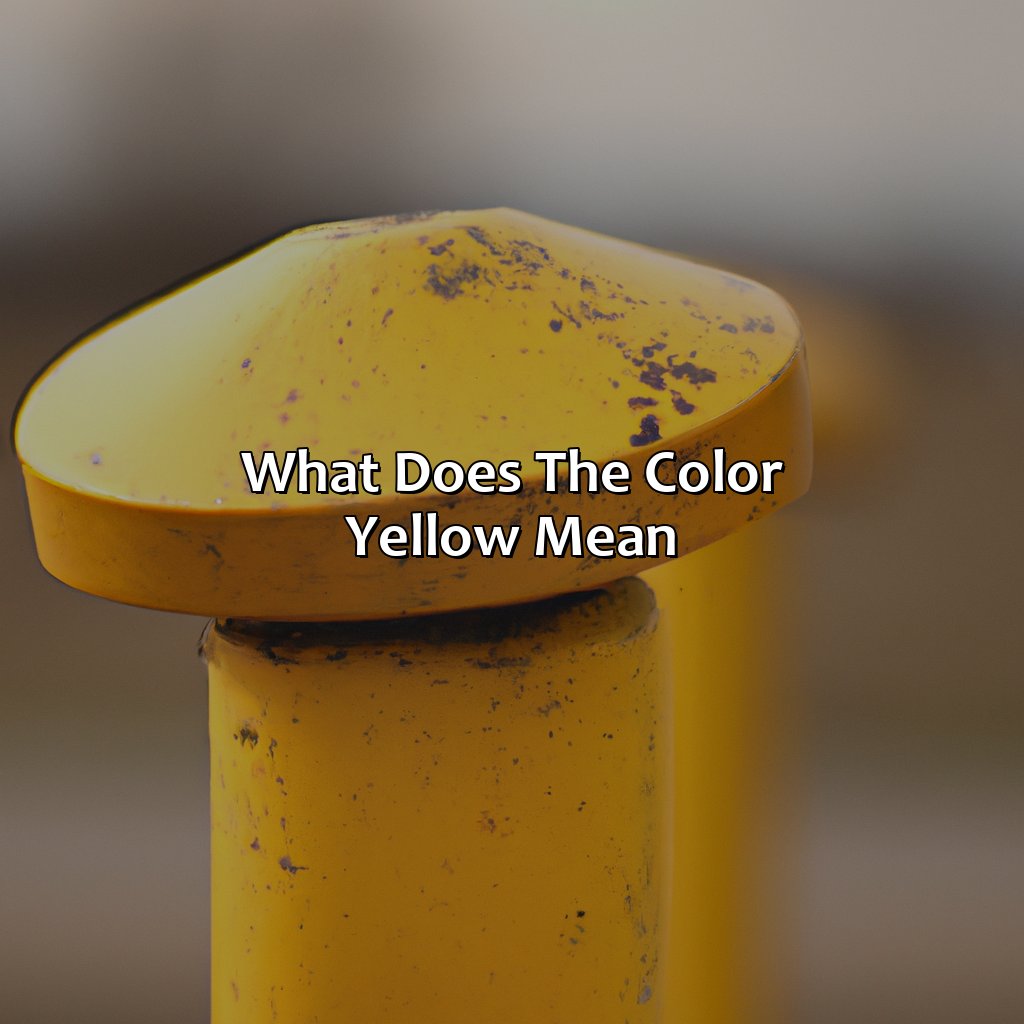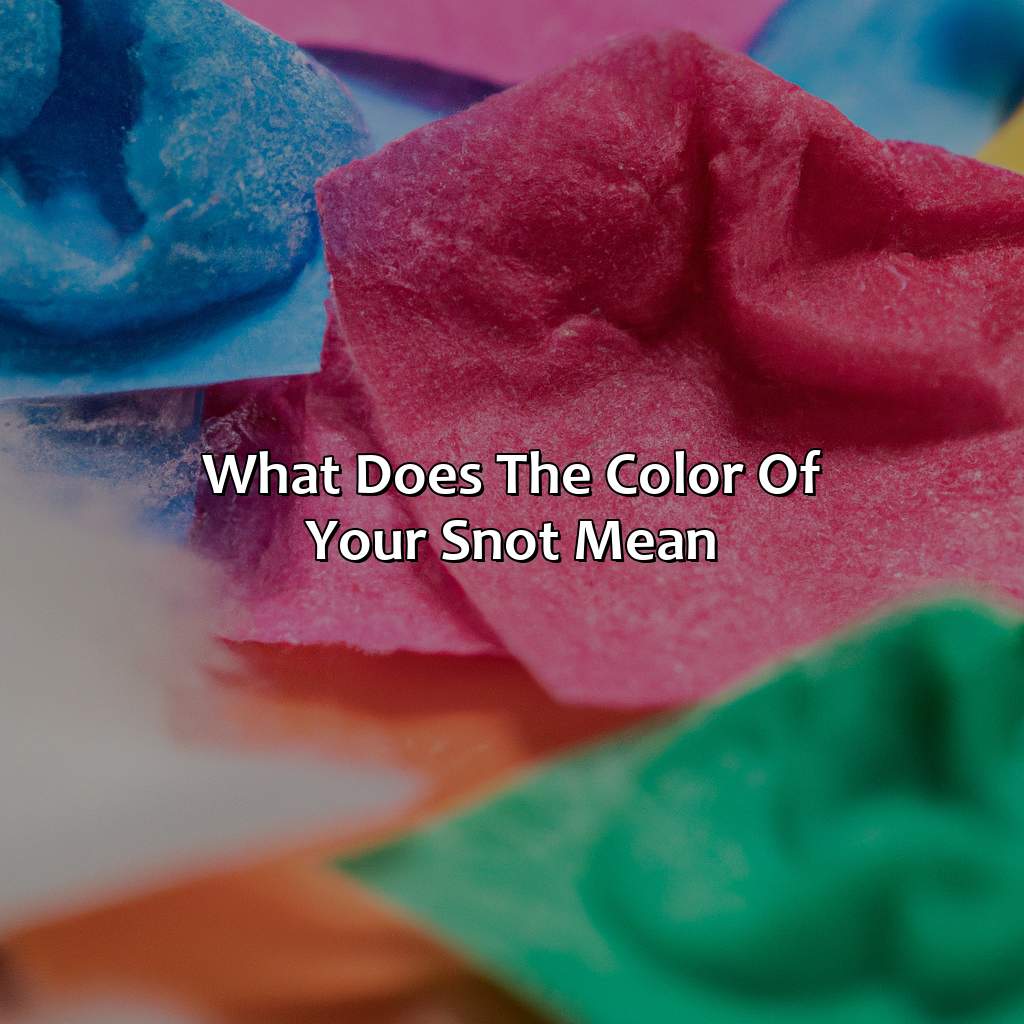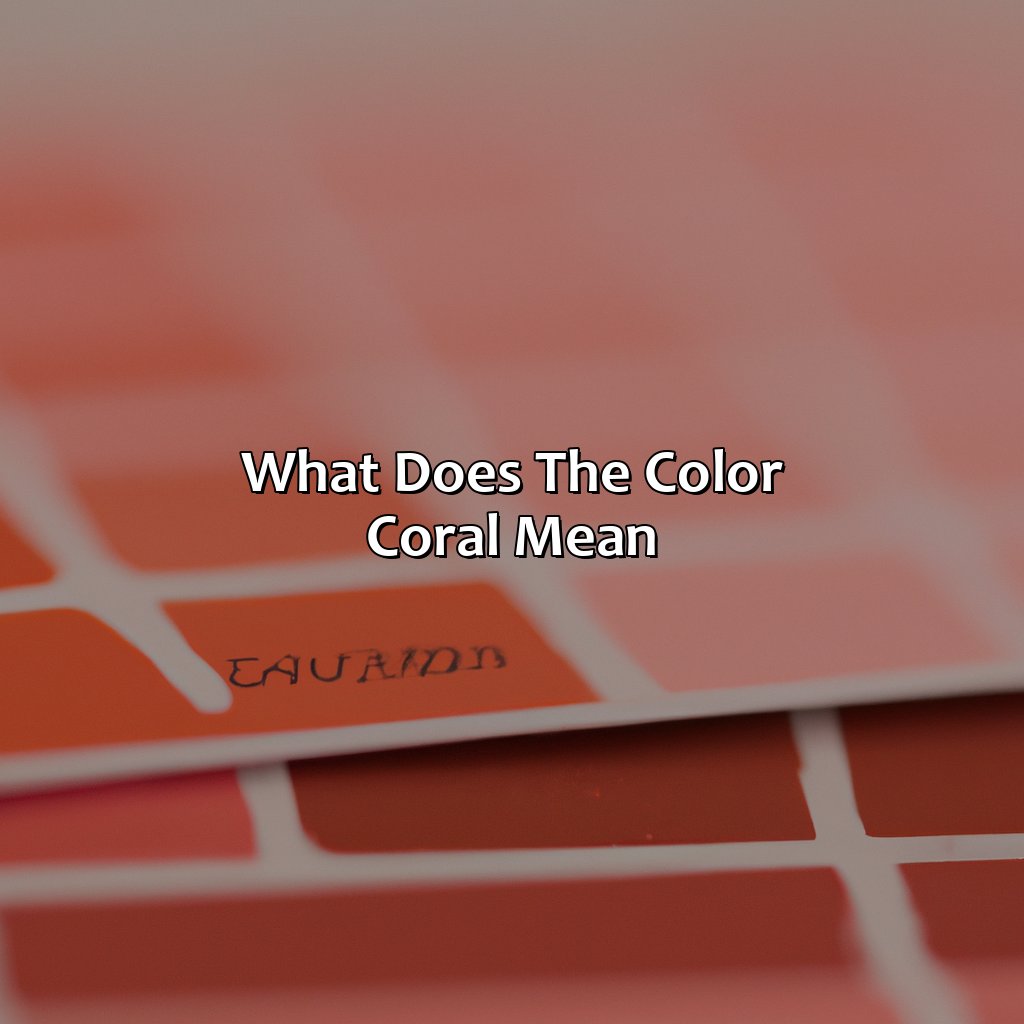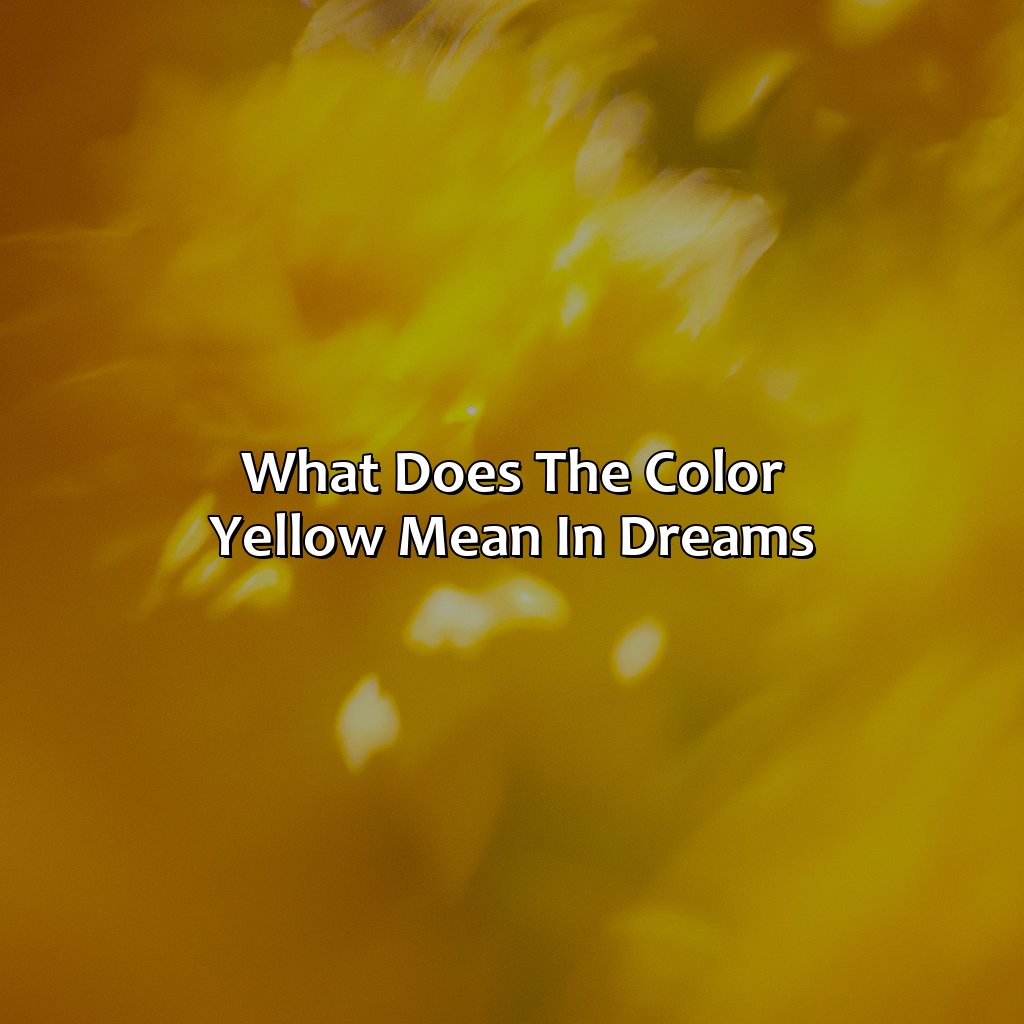Key Takeaway:
- The color yellow is associated with happiness and positivity. It is often used in color palettes for fashion, makeup, and home decor to create a warm and welcoming vibe.
- In symbolism, the color yellow can represent optimism and enlightenment, as well as warning and caution. Yellow can also symbolize wealth, power, and royalty.
- Culturally and historically, the color yellow has significance in ancient China and western art and literature. Understanding the psychological effects of yellow on emotions and health can also be useful in practical applications such as design and marketing.
Overview of the Color Yellow
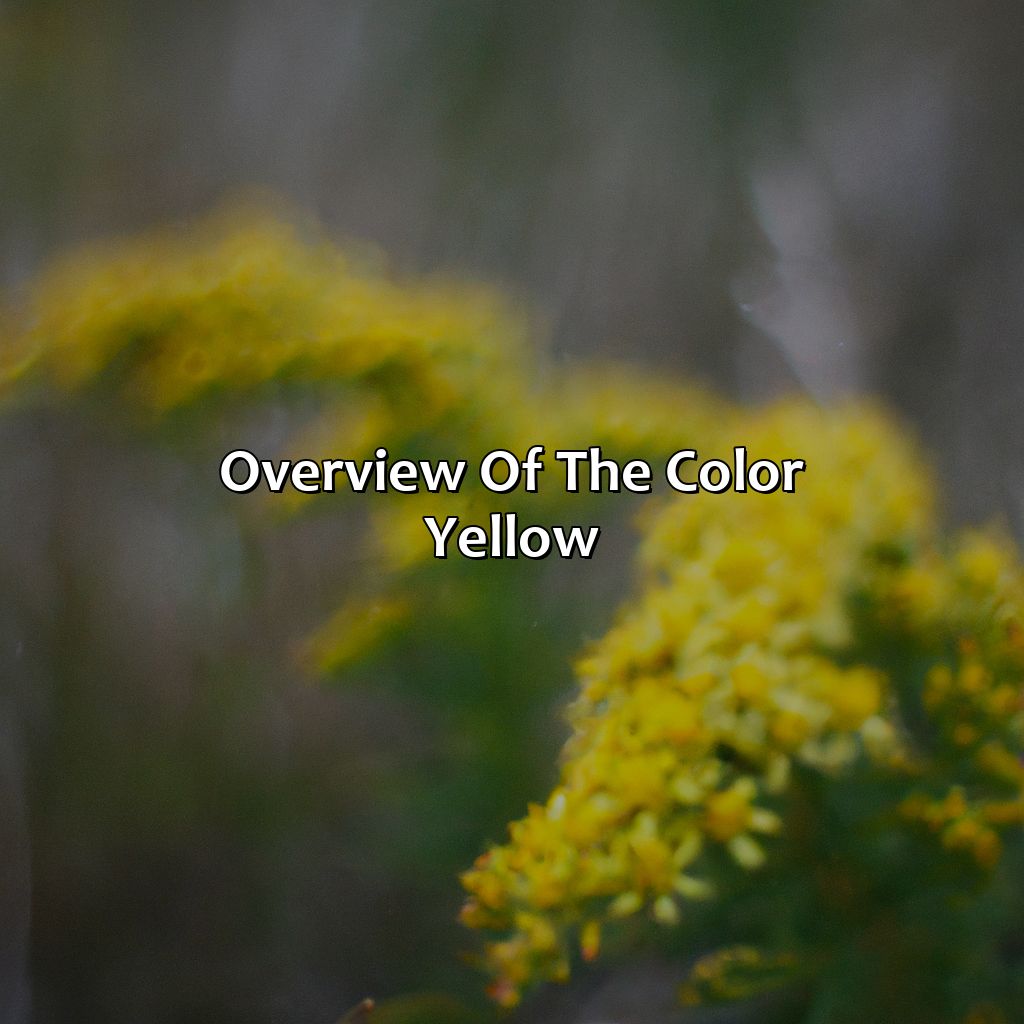
Photo Credits: colorscombo.com by Jason Davis
Colors are often associated with various meanings and emotions. The color yellow, for instance, is known to symbolize happiness, optimism, and energy. It is a bright and cheery color that can evoke positive feelings. Different shades of yellow can vary in their interpretations, but overall, the color yellow is known for its vibrancy and liveliness. It is used widely in fashion, makeup, and home decor, and yellow color palettes are popular for their cheerful and sunny tones. In nature, yellow is often associated with the sun, and yellow flowers symbolize friendship and joy. Yellow is also a common color in food, and is associated with lemons, bananas, and other citrus fruits. The history of yellow can be traced to ancient Egypt, where it was associated with the sun and the god Ra.
Symbolic Meanings of the Color Yellow
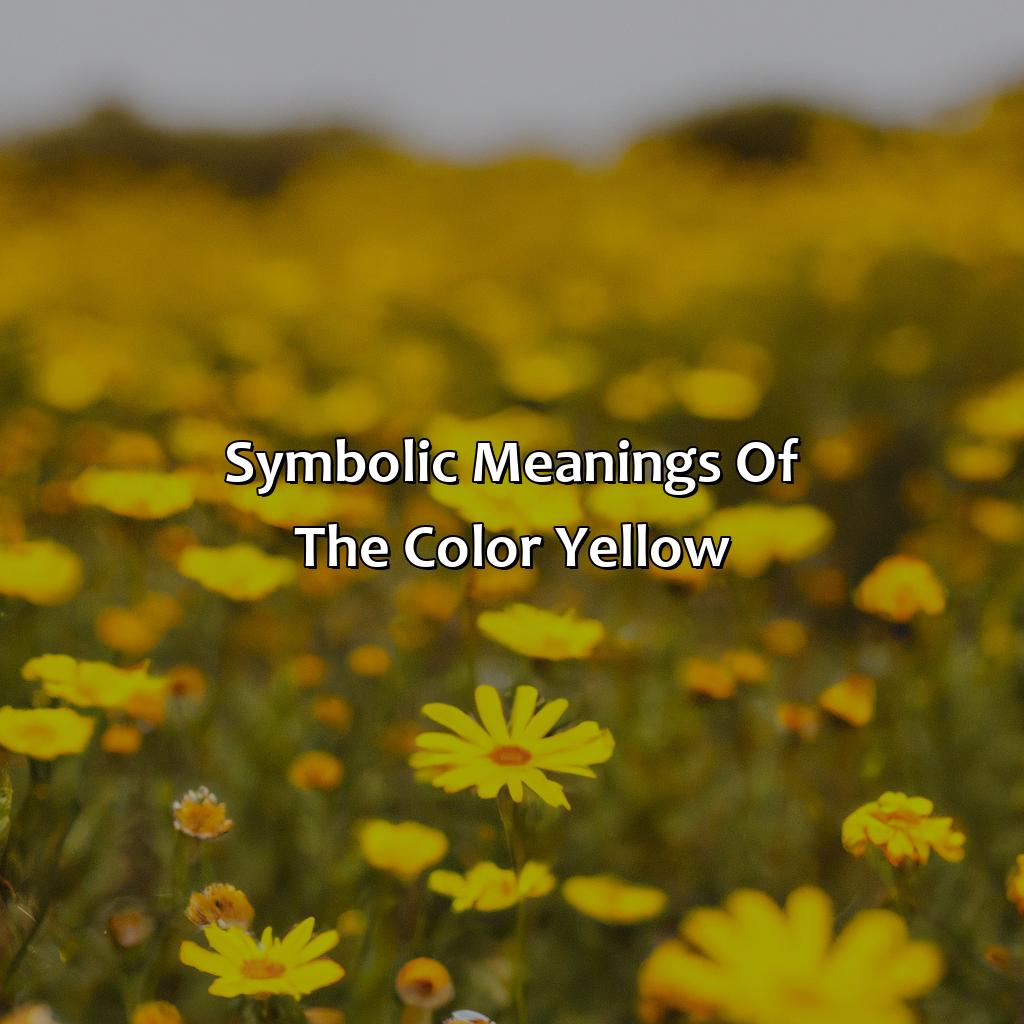
Photo Credits: colorscombo.com by Stephen Campbell
The color yellow is full of symbolic meanings. This article looks at how the hue is used and perceived in different areas, such as literature and spirituality.
It’s divided into three parts:
- “Yellow as a Symbol of Optimism and Enlightenment” looks at how it brings about happiness and other positive traits.
- “Yellow as a Symbol of Warning and Caution” examines how it can be used as a sign of danger.
- Finally, “Yellow as a Symbol of Wealth, Power, and Royalty” looks at how it denotes prestige.
All of these aspects of yellow symbolism are explored in-depth.
Yellow as a Symbol of Optimism and Enlightenment
The cheerful yellow color symbolizes happiness, optimism, and positivity. Its bright hue evokes a sense of warmth, joy, and hope. In ancient civilizations, the color yellow represented enlightenment, wisdom, and spiritual growth. This color encourages creativity and stimulates mental activity. Yellow energy can cleanse the aura and provide healing benefits in yoga or meditation practices.
Yellow holds significant healing properties as it is associated with solar plexus chakra or “Manipura.” This chakra represents self-confidence, personal power and manifestation of one’s goal. When balanced, yellow energy can help soothe digestive issues, boost metabolism and strengthen one’s willpower.
Historically temples in India were painted with yellow hues to bring lightness to visitors’ minds while also keeping the environment cool due to its reflective nature. Ancient Egyptians made use of yellow ochre in burials for it symbolized immortality.
Overall, Yellow’s colors therapy benefits include improving communication skills by reducing nervousness that occurs during public speaking and raising one’s self-esteem level. It can also be a great addition in interior design as it creates a warm welcoming ambiance making the space appear more spacious and lively at the same time.
Don’t ignore the yellow warning signals, they’re just trying to keep you from crashing and burning.
Yellow as a Symbol of Warning and Caution
Yellow’s significance as a warning and cautionary symbol is deeply ingrained in our minds. In many cases, the color yellow is used as a warning signal to attract attention and convey potential danger. Yellow traffic signals and yellow safety equipment are prime examples of this. Additionally, the color yellow has been associated with cowardice or caution in historical contexts as seen in different cultures across time.
In contrast to its positive symbolic meanings discussed earlier, yellow stands for caution, alertness or fear of harm. This can be understood by its association with danger signs like ‘Caution’ tape, hazard signs on roads that contain symbols printed against a bright yellow background such as ‘High voltage’, ‘Wet floor’, etc.
It is human nature to associate stronger emotions with danger and warnings rather than happiness and enlightenment. Therefore, incorporating the color yellow in design must be done carefully to maintain an appropriate balance between signaling warning messages and eliciting positive emotions.
Yellow isn’t only the color of sunshine, it’s also the shade of wealth and power, making it perfect for those who want to stand out in any season.
Yellow as a Symbol of Wealth, Power, and Royalty
Yellow signifies wealth, power, and royalty. It is a color that oozes grandeur, luxury, and sophistication. The bright hue creates an aura of positivity and energy that uplifts one’s mood. The yellow color has been used to symbolize opulence in different cultures throughout history.
In ancient Egypt, yellow was worn by pharaohs to represent their wealth and power. Yellow was also used to decorate temples and expensive jewelry for the elite society. In India, the yellow turmeric powder was considered holy and auspicious for wedding ceremonies.
Yellow in personality traits represents intelligence, creativity, enthusiasm, and optimism. It is a color that induces positive emotions such as happiness and joy. The personality traits related to the color are energetic, happy-go-lucky, friendly, confident individuals.
Yellow in summer represents brightness and warmth while yellow in spring indicates new beginnings as nature starts blooming with fresh foliage.
As seen before, a true fact is that well-known automaker Ferrari has a specific shade of yellow named “Giallo Modena“. Why settle for a gold medal when you can have a yellow one? Exploring the cultural and historical significance of the color yellow.
Cultural and Historical Significance of the Color Yellow
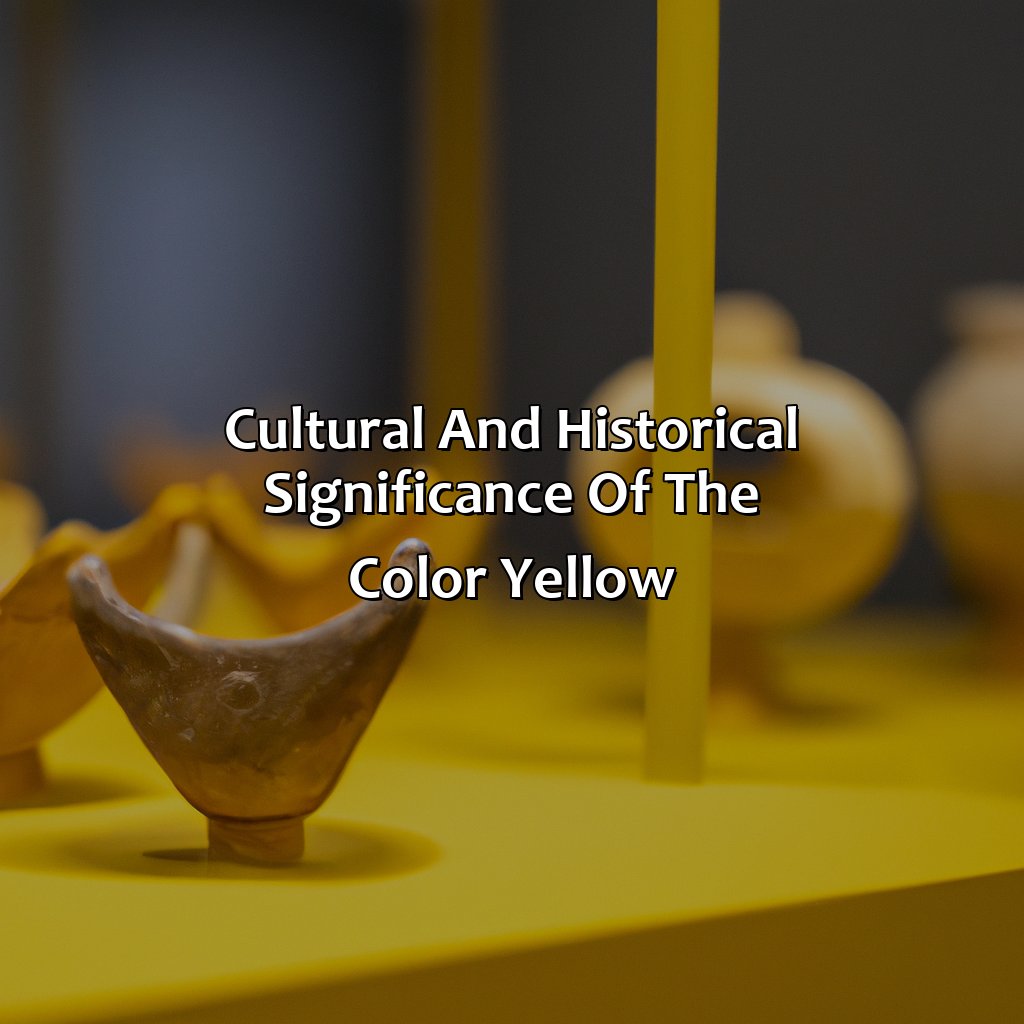
Photo Credits: colorscombo.com by Larry Moore
We explore the cultural and historical importance of yellow. Ancient China’s fondness for yellow and Western art and literature’s portrayal of it are briefly discussed. Further, we look into other aspects: conservation, sustainability, environmental psychology, sports, team logos, national flags and language/linguistics. All involve yellow in some way.
Ancient China’s Love for the Color Yellow
Yellow holds a significant place in Chinese culture. In ancient China, yellow was considered the most important color and a symbol of power, royalty, and prosperity. Yellow was associated with the emperor, who was also known as the “Son of Heaven.” Therefore, only the imperial palace and its officials were allowed to use yellow. The color was used in their robes, buildings, and works of art. Even today, the Chinese refer to themselves as descendants of the Yellow Emperor.
This reverence for yellow is rooted in mythology, where it is believed that the color has divine origins. Legend suggests that Huangdi (the Yellow Emperor) ruled China from 2697–2597 BCE and taught his people how to farm and build cities. According to folklore, he received help from a supernatural being who took on a yellow form.
It is interesting to note that yellow is also often used in Feng Shui (an ancient method used for harmonizing individuals with their surroundings) because it represents earth energy. Therefore it can be used to enhance wealth and attract good fortune.
Overall, Ancient China’s love for the color yellow goes beyond just aesthetic preferences; it reflects deep-rooted cultural beliefs that continue to influence modern-day expressions of art and design.
“All that glitters is not yellow”, but in Western art and literature, the color is often associated with jealousy and betrayal.
Western Art and Literature’s Depiction of Yellow
Throughout Western art and literature, yellow has held various symbolic meanings and cultural associations. In visual art, yellow is often used as a bright accent hue or to convey warmth and sunlight. Literature, on the other hand, may use yellow to indicate caution or warning – such as in the “yellow wallpaper” of Charlotte Perkins Gilman’s famous story. Some novels also employ yellow to convey wealth or luxury.
Meanwhile, ardent admirers of art and culture often revere Vincent van Gogh’s use of the color – notably in his series of sunflower paintings. Yellow may also represent cowardice or betrayal in classic texts like Shakespeare’s Julius Caesar or Steinbeck’s East of Eden.
A less discussed but nevertheless noteworthy association is that between death and the color yellow – evident in works like Edgar Allan Poe’s The Masque of Red Death.
However, these associations are not strictly limited to Western cultures and are influenced by a spectrum of social, historical, political, and religious factors unique to each region.
Being surrounded by the color yellow can lift your mood and stimulate your mind, making it the perfect choice for interior designers and website designers alike.
Psychological Effects of Yellow
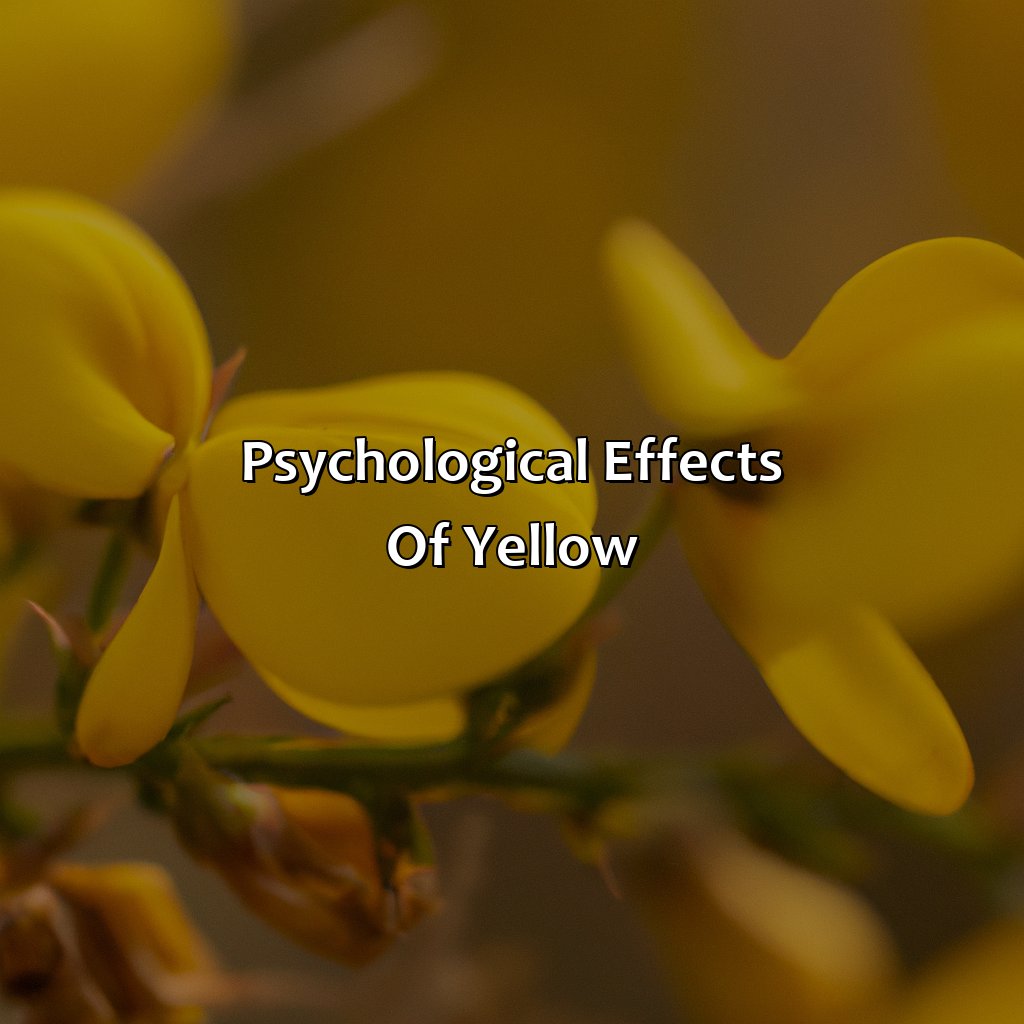
Photo Credits: colorscombo.com by William Moore
This article examines the psychological effects of the color yellow. It looks at how yellow can influence emotions and feelings in behavior psychology, interior design, website and UI/UX design, graphic design, branding, pop culture, and more.
There are two subsections:
- One on the impact of yellow on mental and physical health
- The other on how color therapy can affect skin issues, depression, weight management, and immunity.
The Color Yellow’s Impact on Feelings and Emotions
The influence of yellow on our emotions is profound and far-reaching. Yellow exudes happiness, optimism, and energy that stimulate positive feelings. It can also evoke caution and anxiety if used in excess or inappropriately. Yellow is a versatile color, capable of different interpretations depending on the context it is used in. Emotionally, yellow can promote confidence, hopefulness, and creativity while causing confusion or agitation when overused.
Studies have shown that the shade of yellow influences its emotional effect. Brighter yellows tend to evoke liveliness and excitement while paler yellows create a calmer environment. The impact of yellow on our feelings is significant both consciously and subconsciously; it can improve mental alertness, boost moods, and promote positivity.
Incorporating small touches of yellow in your daily life like wearing a yellow scarf or adding a splash of yellow to your home may help enhance emotional states by creating an uplifting environment.
Pro Tip: To balance the energetic nature of yellow without losing its joyful quality use it sparingly with other colors like blue or green to add harmony to space or design gestures.
Just looking at the color yellow can bring sunshine to your mood and boost your physical health too!
Yellow’s Effects on Mental and Physical Health
Yellow’s Impact on Mental and Physical Wellness
The color yellow can influence one’s mental and physical health in various ways. Yellow color therapy for depression, anxiety, and stress has been utilized in alternative medicine practices to produce a soothing effect. This calming impact of the color yellow on the human mind has been studied and scientifically documented.
In addition to its psychological benefits, yellow is believed to have physical benefits as well. Ayurveda, an ancient Indian system of wellness, employs yellow in treatments for digestive problems and liver disorders. Yellow is also used in skincare products due to its ability to improve skin texture and reduce inflammation. Furthermore, some studies suggest that incorporating yellow into weight management programs may have immune-boosting effects.
To incorporate the therapeutic benefits of yellow into daily life, individuals can combine clothing choices or home decor with this color. Marketing campaigns could use yellow accents to promote relaxation or draw attention while promoting calmness at the same time. Incorporating yellow in logo designs or advertisements will make it appealing to customers as it symbolizes confidence and happiness if portrayed correctly.
Ready to add a pop of sunshine to your design or advertising? Here’s how to incorporate the color yellow for an eye-catching boost.
Practical Applications of Yellow

Photo Credits: colorscombo.com by Mason Brown
Apply yellow in design, aesthetics, marketing, and advertising with these two sub-sections! “Using Yellow in Design and Aesthetics” and “Incorporating Yellow in Marketing and Advertising”. Learn about yellow’s effect on graphic design, fashion psychology, website design, behavioral psychology, UI/UX design, branding, color theory, advertising psychology, marketing, and pop culture.
Using Yellow in Design and Aesthetics
Yellow is a versatile color that can be used in various areas of design and aesthetics. Yellow in graphic design, fashion psychology, behavioral psychology, website design, and UI/UX design has proven to be effective in grabbing attention and conveying different emotions and meanings. Yellow graphic design trends and yellow branding trends continue to emerge due to the color’s fresh and modern appeal.
It’s essential to understand that different shades of yellow have various connotations. Lighter yellow tones impart feelings of happiness, inspiration, and joy. Whereas darker shades can evoke caution or warning. When designing with yellow, it is crucial to think through the overall message you want to communicate.
Incorporating yellow in website design can influence user engagement positively as it naturally attracts attention while maintaining a clean aesthetic. However, using too much intense yellow will overwhelm users and make them feel uncomfortable. In contrast, incorporating subtle hints of lighter yellows invokes feelings of calmness while remaining visually interesting.
In graphic design trends, utilizing vivid yellow on images or typography creates heightened contrast for maximum impact while also adding a modern touch. Moreover, fashion psychology studies show that people associate bright-colored clothing with being more friendly and outgoing.
When approaching branding trends or campaigns related to science, technology or innovation introducing the color yellow positively influences customers’ perception regarding a brand’s intelligence, optimism or novelty.
Incorporating Yellow in Marketing and Advertising
Yellow is an attention-grabbing color that has been used for centuries in marketing and advertising due to its psychological effects on consumers. Incorporating yellow in advertising psychology can evoke feelings of happiness, warmth and optimism, making it an ideal choice for advertisements related to food, entertainment and lifestyle products. Yellow in marketing and branding can be used to emphasize a brand’s positive traits such as innovation, creativity and energy. The use of yellow color theory can also lead to increased brand recognition and visibility.
In pop culture, yellow is often associated with positivity, joy and fun. Its bright hue makes it perfect for logo design, social media graphics and packaging. However, overusing the color can lead to visual clutter and oversaturation.
Interestingly enough, some research suggests that the impact of yellow might depend on cultural context; while it’s perceived positively by many Western cultures, it may signify different things in other parts of the world.
The history of yellow in advertising dates back to the early 20th century when bold poster designs used vibrant colors including yellows to catch people’s eye. This trend continued with print advertisements through the mid-1900s until digital mediums began coming into play.
Today, incorporating yellow in marketing strategy remains popular as ever due to its versatile nature and ability to make products stand out on store shelves or display ads online. It goes without saying that a thoughtful approach is required while incorporating yellow into any marketing campaign – be it for infographics or email banners – taking every detail into consideration from color contrast ratios to target demographics is crucial for achieving desired results.
Five Facts About the Color Yellow:
- ✅ Yellow is often associated with sunshine, happiness, and warmth. (Source: Colorpsychology.org)
- ✅ In some cultures, yellow is a symbol of royalty and prosperity. (Source: Bourncreative.com)
- ✅ Yellow is the most visible color, making it a popular choice for warning signs and safety equipment. (Source: Ptonline.com)
- ✅ Yellow can also induce anxiety and stress in some people, particularly in large amounts or in bright shades. (Source: Verywellmind.com)
- ✅ The color yellow is commonly used in advertising because it is an attention-grabbing and optimistic color. (Source: Neilpatel.com)
FAQs about What Does The Color Yellow Mean?
What does the color yellow mean?
The color yellow is often associated with happiness, optimism, and sunshine. It can also represent caution, cowardice, and jealousy.
Why is yellow often associated with happiness?
Yellow is the color of the sun, which is often seen as a symbol of warmth, energy, and joy. Additionally, yellow is thought to stimulate the brain and boost creativity and happiness.
What does the phrase “yellow-bellied” mean?
The phrase “yellow-bellied” is often used to describe someone who is cowardly or lacks courage. This association with yellow may come from the idea that the color represents caution or fear.
What does the color yellow symbolize in different cultures?
In some cultures, yellow represents wealth, prosperity, and royalty. In others, it may be associated with mourning or loss. Hinduism and Buddhism often associate the color yellow with enlightenment and wisdom.
Can the color yellow have negative connotations?
Yes, yellow can represent negative traits such as cowardice, jealousy, and deceit. Additionally, some people may associate the color with warning signs or caution tape.
How can yellow be used in design?
Yellow can be used to grab attention, create warmth, or signal caution. It is often used in advertising to create a sense of energy or excitement. In design, yellow can be paired with blue or black for a bold, modern look, or with softer pastels for a more soothing feel.
